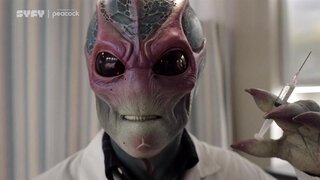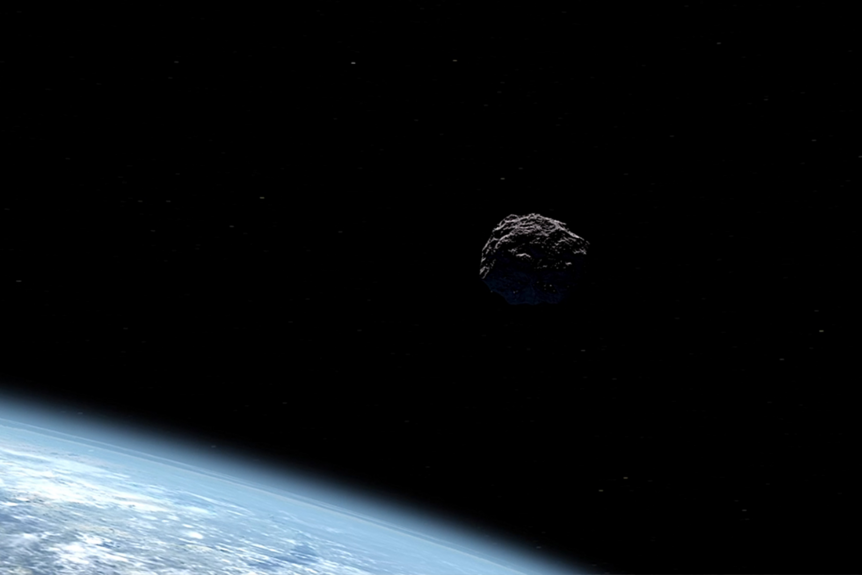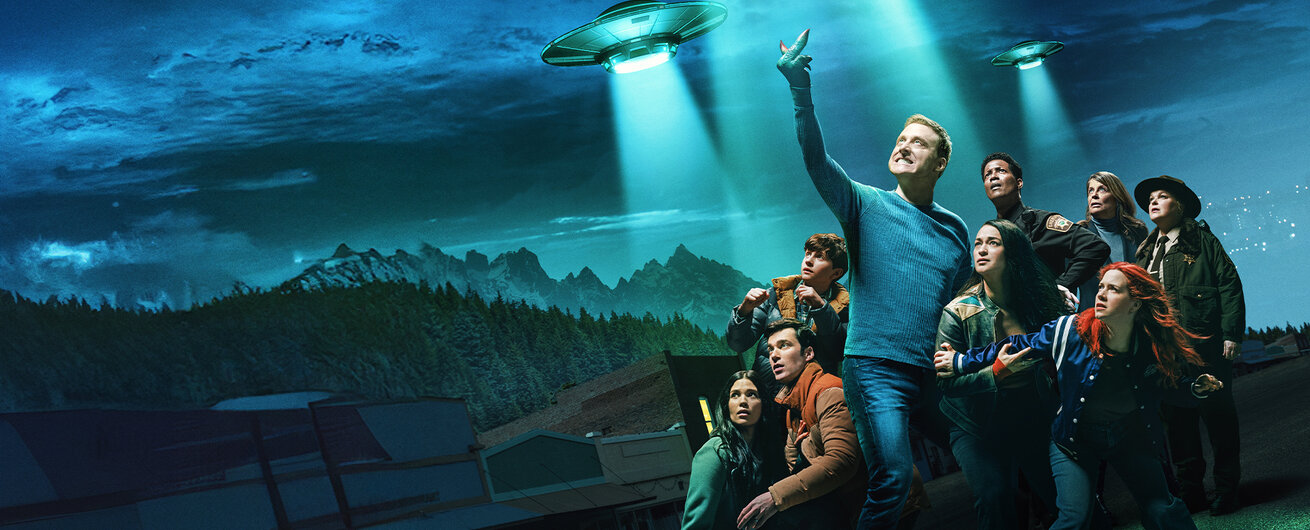Create a free profile to get unlimited access to exclusive videos, sweepstakes, and more!
Retired NASA Telescope Detects First Evidence of Water on an Asteroid's Surface
Water might be more abundant in space than we thought.
If Earth is typical of the rest of the universe, then life isn’t all that picky about its living conditions once it gets a foothold. We find life covering every inch of our planet. It’s in the obvious places like lush forests and tropical seas, but it’s in less obvious places too. We find life in the deepest parts of the ocean, carving out niches in permanently frozen ice, and flourishing inside volcanically fed pools. But no matter where we look, all life needs one thing: water.
As far as we can tell, even extraterrestrial life – like Harry Vanderspeigle, star of SYFY's Resident Alien (new episodes air on Wednesdays) will need water, and that limits the sorts of places we can look for it. A quick look around our own solar system reveals a whole bunch of water on Earth and a bunch more locked in subsurface oceans or in surface ice on distant moons, but not much else. We’ve found some inside permanently shadowed craters on the Moon, underground on Mars, and a few other places, but most of the solar system is practically a desert. Or so we thought.
Using data from NASA’s retired SOFIA observatory, astronomers conclusively found water molecules on the surface of two asteroids for the very first time. The findings could help us understand the distribution of water in our own solar system and where to look for water, and potentially life, in alien star systems.
For More on Space Rocks:
Making Sense of Big Bertha, a Meteorite FROM Earth, Found on the Moon
NEAR and Eros: The Story of the First Asteroid Landed on by a Spacecraft
Cometary Dust Smashed Tiny Craters into the Surface of Asteroid Ryugu
Astronomers Find Water on Surface of Asteroid for the First Time!
The SOFIA Observatory, short for Stratospheric Observatory for Infrared Astronomy, is unlike most other telescopes you’ve seen. A joint project between NASA and the German Aerospace Center (DLR), SOFIA was housed inside a modified Boeing 747SP wide-body aircraft. A large door in the fuselage could be opened during flight to reveal a 2.5 meter (8.2 foot) reflecting telescope.
SOFIA was designed to do infrared astronomy, which is challenging on the ground. The Earth’s atmosphere is filled with water vapor which reflects the majority of infrared light from space. At altitudes of 41,000 feet (12 kilometers), SOFIA flew above the majority of water vapor in the atmosphere, allowing it to do infrared astronomy that wouldn’t be possible at sea level.
The airborne observatory was retired in 2022, but scientists are still combing through the data it collected during its lifetime. Recently, a team of astronomers studied four silicate-rich asteroids observed with SOFIA’s Faint Object InfraRed Camera (FORCAST). Two of those four asteroids, Iris and Massalia, returned unambiguous confirmations of water molecules on their surfaces. The results of the study were published in The Planetary Science Journal.
“We detected a feature that is unambiguously attributed to molecular water on the asteroids Iris and Massalia. We based our research on the success of the team that found molecular water on the sunlit surface of the Moon. We thought we could use SOFIA to find this spectral signature on other bodies,” said Dr. Anicia Arredondo, lead author of the study, in a statement.
The composition of an asteroid tells us something about where it formed in the proto solar system. Silicate-rich asteroids like those that were the focus of this study, form closer to the Sun, while ice-rich space rocks form farther out. Finding water on silicate-rich asteroids and understanding its distribution in the inner solar system could teach us about how water was delivered to the young Earth and how it got spread out throughout the rest of the system.
Observations by SOFIA suggest that the amount of water on Iris and Massalia is consistent with the abundance of water on sunlit portions of the Moon. The other two asteroids in the study, known as Parthenope and Melpomene, returned ambiguous signals, too noisy to clearly define whether water was present or not. The noise in the data is likely due to the limitations of SOFIA. Observing at 41,000 feet is better than sea level, but it’s not as good as space, which is why the team is turning to the James Webb Space Telescope (JWST) for future observations.
“We have conducted initial measurements for another two asteroids with Webb during cycle two. We have another proposal in for the next cycle to look at another 30 targets. These studies will increase our understanding of the distribution of water in the solar system,” Arredondo said.
While we’re looking for aliens in space, you can find one on Resident Alien; new episodes air on Wednesdays at 10/9c on SYFY, and next day on Peacock.



































